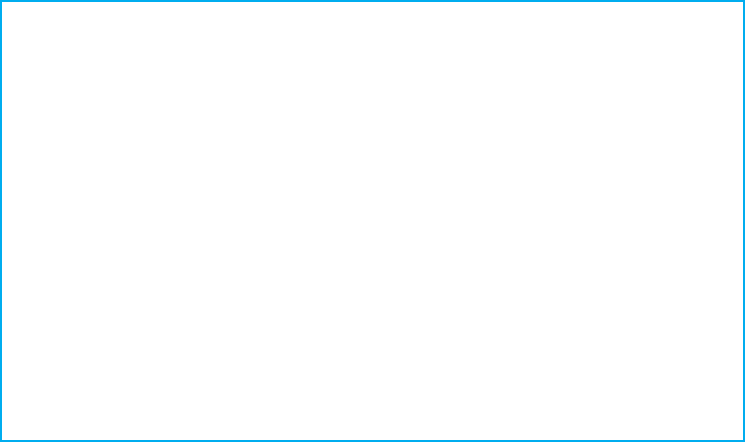TEN STEPS TO A SUCCESSFUL BUSINESS PLAN 13
If you know the individuals concerned, this will help you to tailor your content.
Someone in an operational division will probably pay most attention to the expenditure
section to see how you are going to spend the money. A marketing-oriented reader will
turn to the revenue section to see where the income is coming from. An accountant will
tend to prefer the numbers, less numerate readers will read the story, and so on.
Ten steps to a successful business plan
Start developing your plan by answering an obvious question – what and why are you
planning? When you define this concisely you are well on your way to developing a valid
plan. You then need to work through the planning process.
Do not be daunted by the following list (see also Figure 1.1), the tasks are each rela-
tively straightforward when you tackle them individually and in order.
1 Define your business activities.
2 Define the current status of the business.
3 Define the external market, your competition and your market positioning.
4 Define your objectives for the period of the plan.
5 Develop a strategy for achieving the objectives.
6 Identify the risks and opportunities.
7 Develop a strategy for limiting risks and exploiting opportunities.
8 Refine the strategies into working plans.
9 Project costs and revenues and develop a financial plan.
10 Document it concisely.
This is an iterative process. The identification of risks and opportunities might cause you
to go back and change your strategy for achieving your objectives. The plans themselves
or the bottom line – the cash flow, profit or loss – might highlight new risks.
Two more steps to making it work
There are two more steps that can be added to the previous ten points:
11 Get it approved.
12 Use it.
Most of this book focuses on steps 1–10. Chapters 12 and 13 look at steps 11 and 12.
Perhaps, in reality, these are the most important issues.

14 CHAPTER 1 WHAT‘S IT ALL ABOUT?
Figure 1.1 Ten steps to a successful plan
Start: what are you planning? Why?
1 Define your business activities
2 Define the current status of the business
3 Define external market conditions, your competition
and your market positioning
4 Define your core objectives
5 Develop a strategy for achieving the core objectives
6 Identify risks and opportunities
7 Develop a strategy for limiting risks
and exploiting opportunities
8 Refine the strategies into working plans
9 Project costs, revenues, cash flow
10 Finalise plans

TEN STEPS TO A SUCCESSFUL BUSINESS PLAN 15
GETTING IT ON PAPER
Having arrived at a plan, you then need to get it down on paper. This is not really a small
exercise, but it is easy if you approach it from the correct angle. I hardly like to say this,
but planning how to write the business plan is almost as important as how you planned
the business in the first place. In as few pages as possible, you have to crystallise years of
experience and possibly months of analysing, strategising and planning.
In doing so, you will probably find that you need to resolve conflicts between the plan
and its documentation. Strategies that look good on a white board might not work when
fully analysed and documented. In part, this is because the documenting and the plan-
ning are iterative. Indeed, part of the plan can be written at the outset of the planning
process. For example, if you kick off the planning process by documenting the history and
current status of the business, the market situation and your mission, then you will have a
solid starting point – and a few chapters of the final business plan already in hand.
TEN STEPS
Every plan will follow a general theme as shown below. You will notice a remarkable cor-
relation between this list and the list of activities in the actual planning process.
Ten steps to documenting your plan
1 Begin with certain inevitable preliminaries (contents, contacts, definitions).
2 Provide an executive summary.
3 Set the scene by describing the business.
4 Review the market, your competition and your market positioning.
5 Explain your vision, mission and objectives.
6 Describe your strategy.
7 Explain your plans for developing your products and/or services.
8 Set out your financial projections.
9 Highlight the risks and opportunities.
10 Reach a conclusion.

16 CHAPTER 1 WHAT‘S IT ALL ABOUT?
The amount of detail in each section will vary depending on the business activity
and the intended readership. A plan for a manufacturing unit within a larger organisa-
tion will have much more emphasis on product than on marketing. (It might be a useful
and salutary exercise to develop a marketing plan for cost centres, such as an information
technology department that exists only to support the other departments of the same
company.) A plan for the bank manager is likely to need more detail on the product and
current status than a plan for your chief executive.
Moreover, the order of the sections will vary depending on the audience and intent.
For an internal document you might move the section on the current status right up to
the front, while for a business plan for a start-up operation you might put the current
status very near the end.
HOW MANY PAGES?
A business plan should be as short as possible. Some people say that 20–40 pages is a
good average. Undoubtedly, most executives already have too much to read in this age of
information overload. If you add to their problems, your plan will not be given the atten-
tion that it deserves. This said, I often find it hard to keep a plan down to this optimum
length. There is just so much to say when describing a business.
It depends on your circumstances. You have to provide the documentation and informa-
tion that readers need. You have to give them enough to make the required decisions or take
the required actions. Sometimes you need to give them a little bit more than the minimum
in order to demonstrate that you have done your planning properly. In other instances, you
need to drop in a taster that shows that you know more than you have written.
Five things that belong in annexes
Business plans should be concise and easy to read. How do you cope when you
have to include some fairly heavy material? Where possible, summarise it in the text
and include the full details in annexes. Examples of things that belong in annexes
are as follows.
1 Background material that informs your reader about specialist processes
or concepts that are critical to the plan and are more than simple definitions
of terms.
2 Detailed product specifications.
3 Marketing brochures and leaflets.
4 Detailed financial analysis.
5 Full biographies (CVs or résumés) of senior executives.
t
..................Content has been hidden....................
You can't read the all page of ebook, please click here login for view all page.
